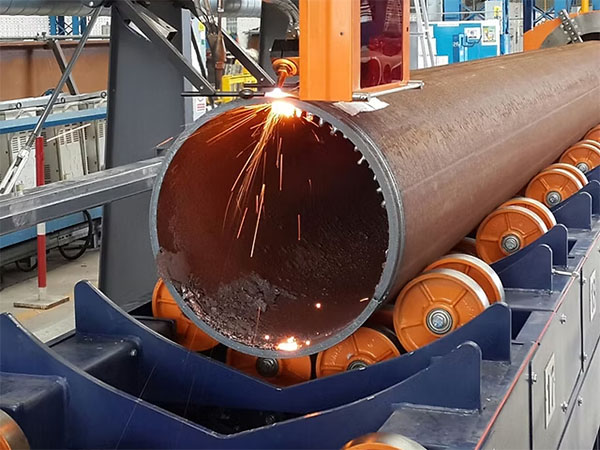Stainless steel is a highly alloyed material. It is a general term for metal alloys containing 12% or more chromium (Cr) and over 50% iron (Fe), featuring high hardness, corrosion resistance and other advantages.
Stainless steel pipes are round or special-shaped pipes made of stainless steel raw materials and are common steel pipes in daily life and industrial production. It is widely applied in various fluid transportation, construction and industrial production.
Why are stainless steel pipes difficult to cut?
Stainless steel has advantages such as high hardness and corrosion resistance, but for this reason, it is more wear-resistant than ordinary carbon steel and more prone to passivation of cutting tools. When cutting, not only should the heat be controlled, but also the surface discoloration or burrs should be prevented. If stainless steel pipes are overheated during cutting, they will change color and turn blue due to heat tempering.

The common
cutting methods are to manually use tools or power tools to cut stainless steel pipes. The following are several common cutting methods.
Manual tools
Pipe cutter (wheeled type) : It cuts stainless steel pipes by rotating and gradually clamping. The entire process is quiet, spark-free and the cut is neat. The only drawback is that the cutting speed is too slow, and thicker pipes need to be tightened repeatedly many times.
Hacksaw: By using suitable bimetallic or high-speed steel (HSS) saw blades with a high number of teeth (24-32 TPI), a relatively smooth cut surface can be achieved when cutting stainless steel pipes. The advantages of this cutting method are that it is easy to operate, the tools are cheap, and it does not take up much space. It is suitable for cutting in environments with limited space. The drawback is that it requires manual operation and the cutting efficiency is relatively low.
Power tool
Portable metal band saw: When cutting stainless steel with metal band saw blades, the efficiency is relatively high. It is recommended to use a dedicated saw blade with low-speed operation and fine tooth design.
Cold saw: It adopts a combination of coolant and high-hardness HSS blades. This method almost eliminates the heat-affected zone, ensuring that the cut is clean and smooth.
Grinding wheel cutting machine: It adopts a special stainless steel grinding wheel, which has a fast cutting speed, but it is necessary to pay attention to controlling the sparks and heat generated. It is recommended not to use it for a long time to avoid damaging the material.
Plasma cutting: It is suitable for cutting thick pipe materials and has the advantages of high speed and high precision. However, the cost of this equipment is relatively high, and goggles and protective clothing need to be worn during operation.
Standard operating procedures
1. Measure the diameter (cut by pipe cutter) : Measure the diameter of the pipe to ensure that the appropriate pipe cutter is used to cut the steel pipe.
2. Mark the cutting line: Use ink or tape to draw lines around the pipe to ensure the cut is straight.
3. Clamping and fixing: Firmly fix the pipe fittings to prevent the pipe from shifting during the cutting process.
4. If a cold saw or an electric band saw is used during the cutting process, cut slowly and use coolant. When operating manually, apply uniform force to avoid forcing and damaging the saw blade.
5. Cooling treatment: After cutting, cool down the cut part to reduce the thermal effect.
6. Deburring: After the pipe is cut, it should be deburred. Use a deburring tool to smooth the inner and outer edges and remove sharp burrs.
Safety Notice
Wear appropriate PPE: goggles, protective gloves, protective masks, and face shields and fire-resistant suits if necessary.
Control sparks and heat sources: Especially when using grinding wheel cutting and plasma cutting, keep away from flammable materials and ensure good ventilation.
Clamping pipe fittings: Ensure stability to prevent accidental sliding or breakage that could cause injury.
Keep the working environment clean and tidy: Remove chips and debris to prevent slipping or industrial accidents.
Summary and suggestions
The selection of tools should be determined based on the material, thickness, budget and scenario of the pipeline.
The key steps are: accurate marking → stable clamping → cutting control → cooling and temperature reduction → deburring and cleaning.
Safety should always come first. Protective gear should be worn during any operation and a well-ventilated environment should be maintained.
CENTRAL STEEL has its own independent pipe production line. Our production line is equipped with advanced equipment such as non-destructive testing (NDT), hydrostatic testing, heat treatment, and pipe cutting machines. Aimed at providing customers with comprehensive services and outstanding experiences.
